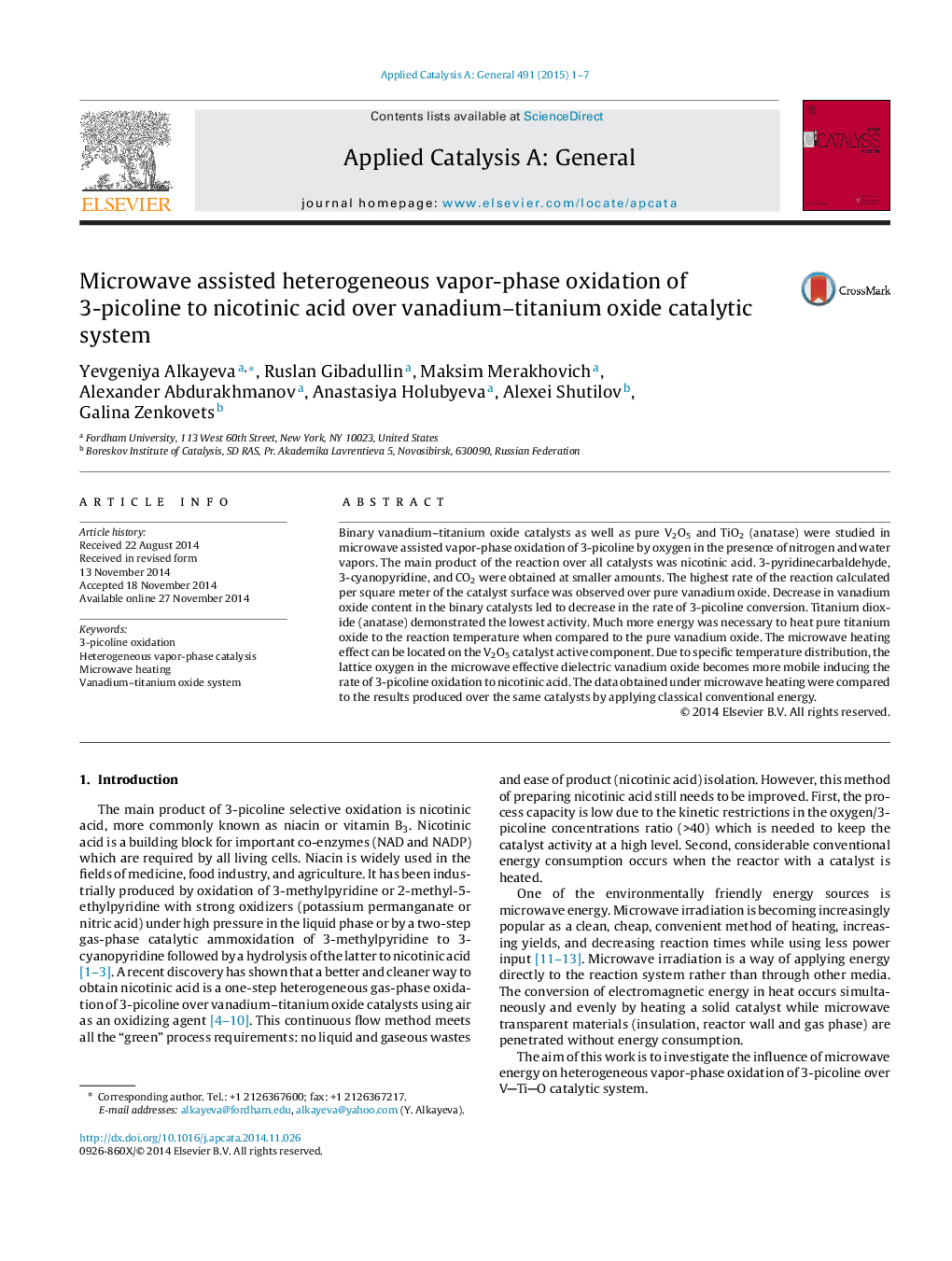| Article ID | Journal | Published Year | Pages | File Type |
|---|---|---|---|---|
| 39320 | Applied Catalysis A: General | 2015 | 7 Pages |
•Microwave energy successfully used in catalytic gas-phase oxidation of 3-picoline.•The heating effect is located on the V2O5 active component.•TiO2 is a poor energy absorber and does not contribute to the binary system activity.•Advantages: higher selectivity and capacity of nicotinic acid synthesis are observed.
Binary vanadium–titanium oxide catalysts as well as pure V2O5 and TiO2 (anatase) were studied in microwave assisted vapor-phase oxidation of 3-picoline by oxygen in the presence of nitrogen and water vapors. The main product of the reaction over all catalysts was nicotinic acid. 3-pyridinecarbaldehyde, 3-cyanopyridine, and CO2 were obtained at smaller amounts. The highest rate of the reaction calculated per square meter of the catalyst surface was observed over pure vanadium oxide. Decrease in vanadium oxide content in the binary catalysts led to decrease in the rate of 3-picoline conversion. Titanium dioxide (anatase) demonstrated the lowest activity. Much more energy was necessary to heat pure titanium oxide to the reaction temperature when compared to the pure vanadium oxide. The microwave heating effect can be located on the V2O5 catalyst active component. Due to specific temperature distribution, the lattice oxygen in the microwave effective dielectric vanadium oxide becomes more mobile inducing the rate of 3-picoline oxidation to nicotinic acid. The data obtained under microwave heating were compared to the results produced over the same catalysts by applying classical conventional energy.
Graphical abstractFigure optionsDownload full-size imageDownload high-quality image (186 K)Download as PowerPoint slide
